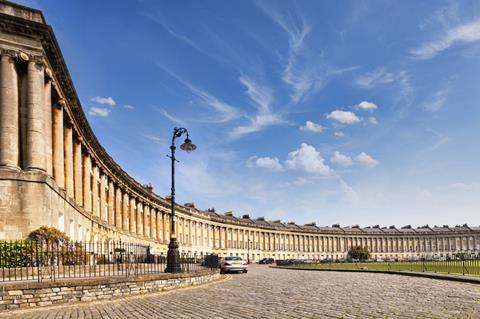Review of the barriers to improving the energy efficiency of historic buildings include proposals to automatically grant permission for improvements such as double glazing
The government has published proposals to make it easier for owners to retrofit historic buildings to improve their energy efficiency.
Listed buildings and those in conservation areas add up to over 10% of the UK’s housing stock and will need retrofitting to meet the government’s 2050 net zero target.
Retrofitting historic buildings is more challenging than standard ones because of the need to preserve their historic character which requires expensive specialist skills and materials, which are in short supply. Listed buildings also require consent for any changes other than minor repairs.

The looking at the barriers to retrofitting historic buildings, and what actions are needed to overcome these. It identified five key challenges including planning, industry and planning capacity, skills, information and costs.
Planning was identified as a key barrier because of confusion over what consents were needed, the cost of preparing applications and the time taken to obtain permission.
The survey also revealed obtaining permission was a postcode lottery with some local authorities generally giving permission for improvements such as PV panels whereas others were much more restrictive.
>> Also read: How to retrofit a historical building: the challenge and solutions
The government says recent revisions to the National Planning Policy Framework should help make obtaining permission easier as, for the first time, this includes a section on giving significant weight to the need for historic building retrofit when determining applications.
The government also intends to introduce a National Development Management Policy, which are intended to bring consistency to the planning process, specifically on improvements to historic buildings.
The government will also consult on the greater use of local listed building consent orders. These are currently used in limited circumstances by some local authorities and automatically grant permission for specific improvements such as double glazing providing standard designs are followed. The consultation will also explore the potential for England-wide listed building consent orders.
Other measures include providing better quality and easily accessible information to help historic building owners understand what energy efficiency measures need consent and how to improve buildings without damaging their special qualities or fabric.
The review also acknowledges the skills gap in local authority planning departments. There is currently no training available that specifically draws heritage, sustainability, and retrofit skills together for planners; a Historic England local authority staffing survey revealed only 16% felt very confident about decisions on energy efficiency retrofit. Historic England is finalising an advice note on climate change and historic building adaptation and will use this to deliver online training to local authority staff.
A significant lack of historic building retrofit skills in the construction industry means people struggle to find competent contractors. The government says its directly funded future training programmes will support skills relevant to historic buildings and that it will work with third party training providers to do the same.
Grosvenor, which has a large portfolio of historic buildings welcomed the review. It said: “Retrofitting historic properties could generate £35bn of output a year, reduce carbon emissions for nearly a quarter of all UK homes and a third of commercial buildings and safeguard the future for an important part of the UK’s heritage. Achieving this requires a supportive policy framework that cuts across planning, skills, fiscal support, and consumer advice. As such, we welcome the Government’s report and commitment to further reforms, particularly to further reforming the planning system which can be a significant barrier.”



























No comments yet